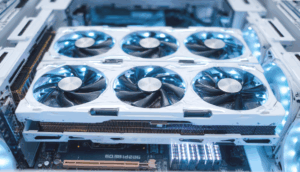In today’s interconnected world, robust and reliable data communication is paramount for both industrial and medical applications. Industrial data communication cables serve as the backbone of these systems, enabling seamless data transfer and control between various devices and equipment. Choosing the right cable is crucial for ensuring optimal performance, minimizing downtime, and maximizing the efficiency of your operations.
The industrial environment presents unique challenges for cabling. These cables must withstand harsh conditions, including extreme temperatures, exposure to chemicals, abrasion, and electromagnetic interference (EMI). Specialized cable designs incorporating durable jacketing materials like polyurethane (PUR) or thermoplastic elastomer (TPE) are essential for protecting the conductors and ensuring long-term reliability. Furthermore, shielding is critical for minimizing EMI and ensuring data integrity, especially in environments with high levels of electrical noise. Common shielding methods include braided shields, foil shields, and combinations of both. The selection of appropriate materials and shielding techniques depends on the specific application and the severity of the environmental factors.

Medical applications demand even stricter requirements. Medical data communication cables must not only be durable and reliable but also biocompatible and resistant to sterilization processes. Cables used in direct patient contact applications require specialized materials that are non-toxic and hypoallergenic. Sterilization resistance is crucial for preventing the spread of infections and maintaining a hygienic environment. Autoclavable cables, which can withstand repeated steam sterilization cycles, are commonly used in medical settings. Furthermore, compliance with relevant regulatory standards, such as ISO 10993 for biocompatibility and IEC 60601 for medical electrical equipment, is essential for ensuring patient safety and regulatory compliance.
The choice of cable type depends heavily on the specific data transmission requirements. Ethernet cables, utilizing protocols such as Ethernet/IP and PROFINET, are widely used for connecting industrial devices and equipment. These cables offer high bandwidth and reliable data transfer, making them suitable for demanding applications. Serial communication cables, such as RS-232 and RS-485, are still prevalent in many legacy systems and are often used for connecting sensors, actuators, and other devices. Fiber optic cables offer the highest bandwidth and immunity to EMI, making them ideal for long-distance data transmission and applications requiring high levels of data security. The selection of the appropriate cable type depends on factors such as data transmission speed, distance, and the type of communication protocol used.
Selecting the right industrial or medical data communication cable requires careful consideration of various factors, including environmental conditions, data transmission requirements, and regulatory compliance. Working with a reputable cable supplier with extensive experience in these applications is essential for ensuring that you choose the optimal cable for your specific needs. Proper installation and maintenance are also crucial for maximizing the lifespan and performance of your cables. Regular inspections and testing can help identify potential problems before they lead to costly downtime or equipment failures. By carefully selecting and maintaining your data communication cables, you can ensure the reliable and efficient operation of your industrial or medical systems.